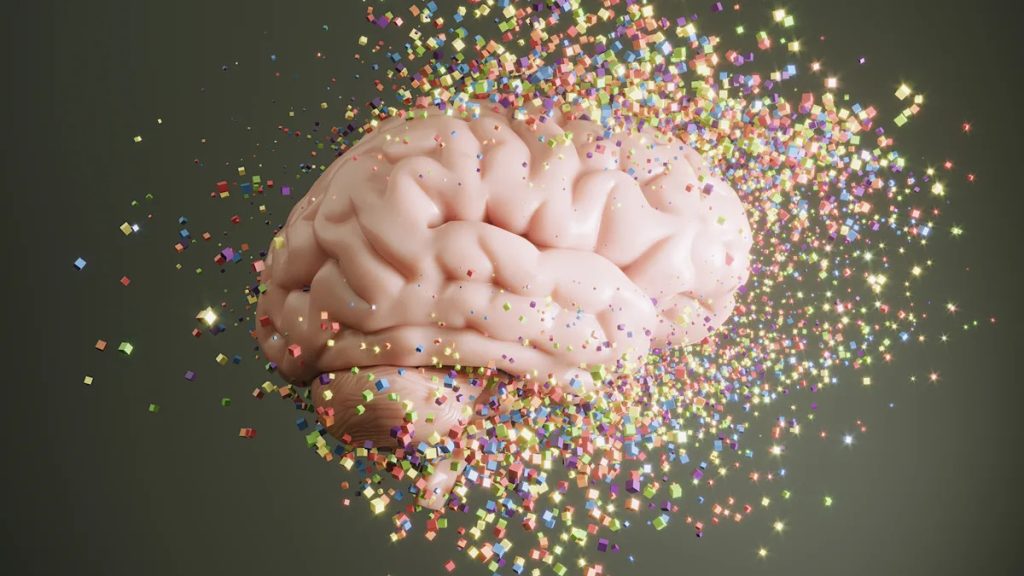Without us even noticing it, our brains are the ultimate multitaskers. The brain’s prefrontal cortex can tell us when it is safe to cross the street, while the cerebellum helps control the large motor skills required for us to get across. The medulla oblongata makes it so that we don’t have to think to breathe or for our hearts to beat.
Brains also have different regions for processing visual information about physical matter and objects. For example, a rock skipping across a pond behaves differently than a cascading waterfall and our brains can tell. Now, neuroscientists have identified the parts of the brain’s visual cortex that respond more when we look at things (rigid objects like a stone skipping or a bouncing ball) vs stuff (liquids or something more granular like sand). Understanding this distinction may help our brains better plan how to interact with various materials. The discovery is detailed in a study published last week in the journal Current Biology.
“When you’re looking at some fluid or gooey stuff, you engage with it in [a] different way than you do with a rigid object. With a rigid object, you might pick it up or grasp it, whereas with fluid or gooey stuff, you probably are going to have to use a tool to deal with it,” said Nancy Kanwisher, the study’s author and neuroscientist at MIT, said in a statement.
Looking at stuff versus things
Sometimes called the “what” region, our brain’s ventral visual pathway helps us recognize shapes and 3D objects. Previous brain imaging studies have revealed regions within the ventral visual pathway that are involved in this important function. One critical area in this pathway is called the lateral occipital complex (LOC).
The brain’s dorsal visual pathway helps us compare what we are seeing in tandem with our other senses. A region within the dorsal visual pathway, known as the frontoparietal physics network (FPN), is what analyzes the physical properties of materials, such as its size or how stable it is.

A new study finds parts of the brain’s visual cortex are specialized to analyze either ‘things’ like solid objects or “stuff,” flowing materials like water or sand. This image is an example of what the researchers would consider a “thing.” CREDIT: MIT
While scientists have learned quite a bit about how the dorsal and ventral visual pathways respond to different features of objects, most of these studies have been conducted using solid objects–aka things–and not stuff.
“Nobody has asked how we perceive what we call ‘stuff’ — that is, liquids or sand, honey, water, all sorts of gooey things. And so we decided to study that,” study co-author and MIT cognitive neuroscientist Vivian Paulun added.
Gooey materials behave very differently than solids do. Instead of bouncing like a ball, something like water or syrup flows and interacting with them usually requires a type of container and tools such as spoons. The team from this study were curious if these physical features require the brain to dedicate specialized regions in order to interpret stuff.

A new study finds parts of the brain’s visual cortex are specialized to analyze either “things” like solid objects or “stuff,” flowing materials like water or sand. This image is an example of what the researchers would consider “stuff.” CREDIT: MIT
Sloshing around
To explore how the brain processes stuff, Paulun used a visual effects software program to create more than 100 video clips. The videos showed different types of things or stuff interacting with the physical environment. The materials were sloshing or tumbling inside a transparent box, being dropped directly onto another object, or were bouncing or flowing down a set of stairs.
As people watched the videos, the team used functional magnetic resonance imaging (fMRI) to scan their visual cortex. They found that both the ventral visual pathway’s LOC and the dorsal visual pathway’s FPN regions respond to things and stuff. However, each pathway has distinctive subregions that will respond more strongly to one versus the other.
“Both the ventral and the dorsal visual pathway seem to have this subdivision, with one part responding more strongly to ‘things,’ and the other responding more strongly to ‘stuff,’” Paulun says. “We haven’t seen this before because nobody has asked that before.”
[ Related: How does your brain know something is real? ]
How the brain is like a video game
According to the team, this suggests that our brains could have different ways of representing these two categories of material. This process is similar to the artificial physics engines that are used to create the graphics in video games. These engines typically represent a 3D object as a mesh, while fluids are depicted as sets of particles that can be rearranged.
“The interesting hypothesis that we can draw from this is that maybe the brain, similar to artificial game engines, has separate computations for representing and simulating ‘stuff’ and ‘things.’ And that would be something to test in the future,” Paulun says.
The team also hypothesizes that these regions may have evolved to help the brain better understand important distinctions that allow it to plan how to interact with the physical world. In future studies, the team plans to look at whether the areas involved in processing rigid objects are also stimulated when a brain circuit that’s involved in planning to grasp objects is also active.
They also hope to research whether any of the areas within the FPN correlate with the processing of the more specific features of materials, such as a ball’s bounciness or water’s apparent thickness. As for the LOC, they plan to take a closer look at how the brain represents changes in the shape of fluids and more elastic objects.

